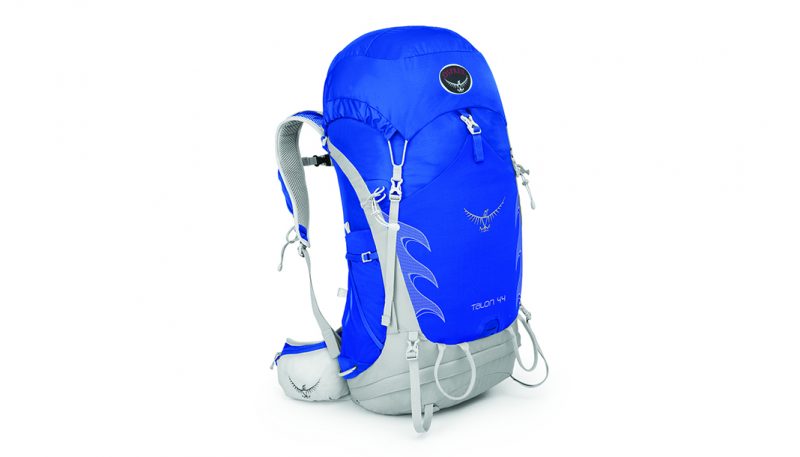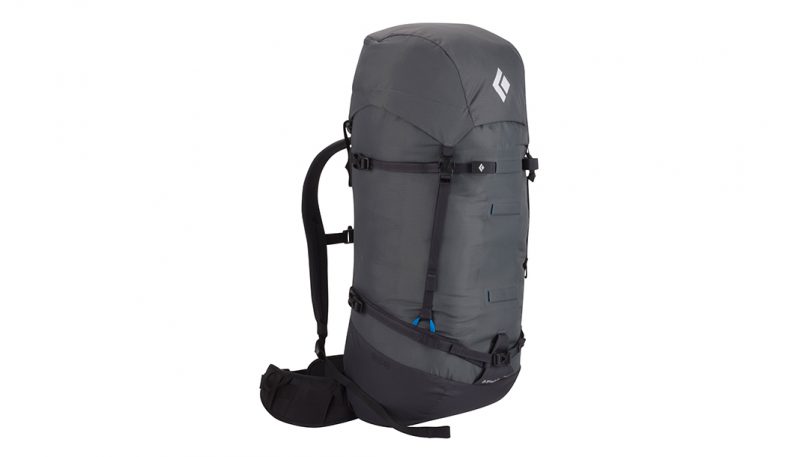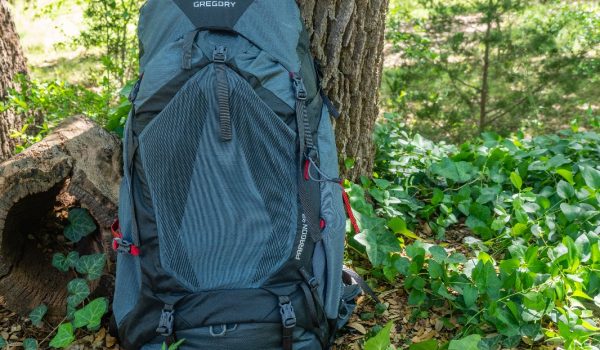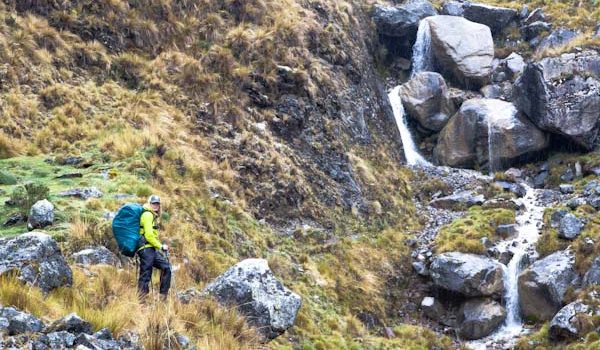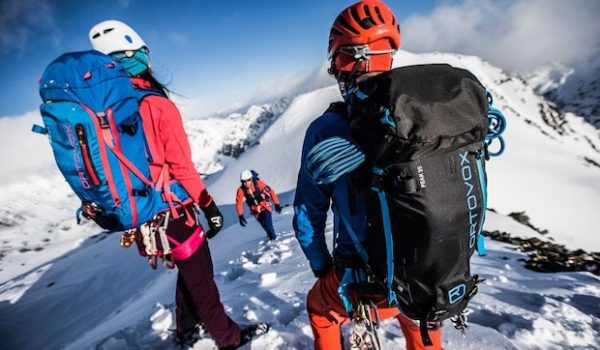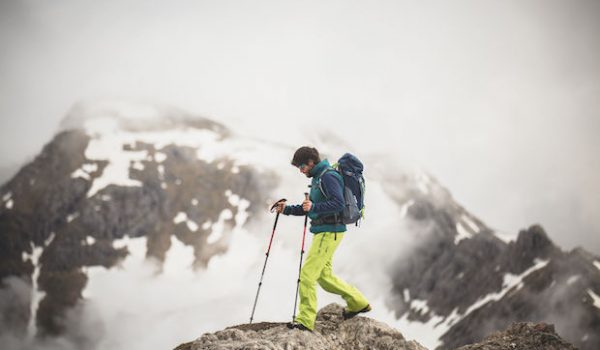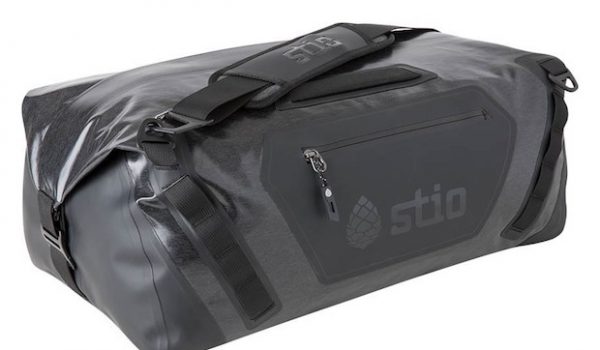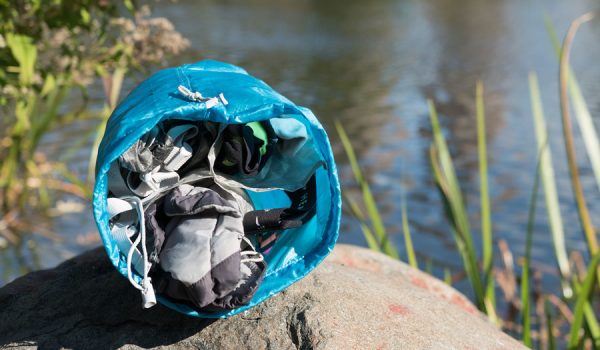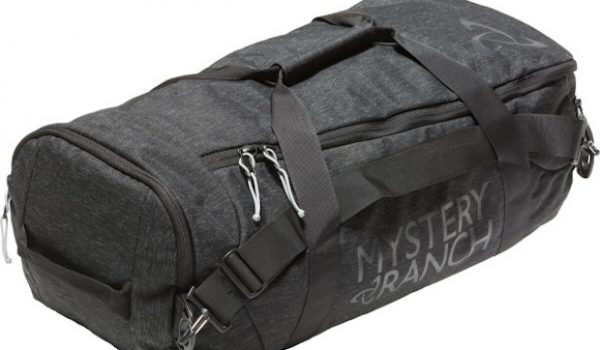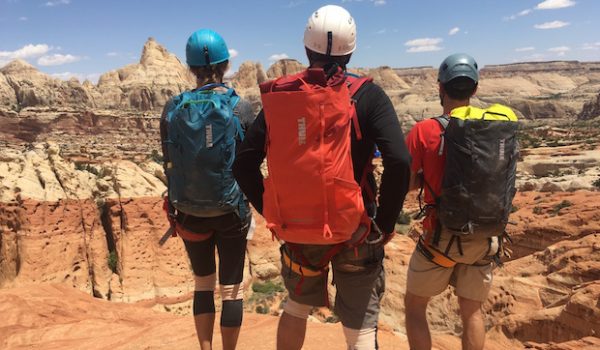Comfort/Fit
The Granite Gear Lutsen 45, Osprey Talon 44, and Bergans of Norway Helium 40 numerically scored the same for comfort/fit, but the Lutsen 45 came out on top. The easily-adjustable Air Current suspension system, with its polycarbonate frame sheet and deeply channeled and sculpted foam back panel, were unbeatable at remaining comfortable under load and heat stress. The Osprey Talon didn’t remain as comfortable as the Lutsen 45 when loads exceeded 30 pounds, but the Talon’s more compliant Airscape suspension system was supremely comfortable with more aggressive movement in the heat. The Helium 40’s Quick Adjust PRO shoulder harness, small footprint on the back, and low weight all contributed to the pack’s high rating, but loads were limited to 30 pounds and ventilation wasn’t nearly as good as the Lutsen 45 or Talon 44. The Gregory Zulu 40 and Black Diamond Equipment Speed 40 were next in the ratings, with the nod going to the Speed 40 due to the lack of mobility of the Zulu 40. The North Face Shadow 40+10 took last in comfort/fit, hampered by its minimal suspension system.
Stability
The Gregory Zulu 40 scored a rare 10 in this rating category. The CrossFlo DTS suspension system’s unique ability to boost tension within its wire frame and mesh panel as the load increased was remarkable. The airflow was equally as impressive, even under heavier loads. The Granite Gear Lutsen 45 was a close second, the AC Current suspension system’s polycarbonate frame sheet delivering excellent load transfer to the hips while providing ample mobility. The Black Diamond Equipment Speed 40 and Bergans of Norway Helium 40 tied for the third spot, with the Speed 40 nudging ahead due to its more substantial frame sheet, stays and larger footprint on the back, which all made the load feel more planted, especially during dynamic movements. The Osprey Talon 44 and North Face Shadow 40+10 tied for the last spot in this rating category. The Talon 44 got voted ahead, the more substantial Airscape suspension system handling loads better than the minimal frame sheet and wire perimeter found in the Shadow 40+10.
Storage
The Granite Gear Lutsen 45 and Osprey Talon 44 both scored impressively high in the storage category rating. The Lutsen nudged ahead; the floating lid and roll-top closure expanding the capacity of the main compartment. The Talon 44 lacked this type of volume extension, but stretch pockets adorned much of the exterior surfaces of this pack, which added a generous amount of storage capacity. The Gregory Zulu 40 was next in line; the permanently attached lid was unable to expand the main pack body’s internal capacity, but it was cavernous and a large stretch pocket on the front of the pack provided ample auxiliary storage. The Black Diamond Equipment Speed 40, Bergans of Norway Helium 40 and North Face Shadow 40+10 all numerically scored the same for the fourth position in storage, but the Shadow 40+10 stepped ahead, with its large extension sleeve and a roll-top closure. The Helium 40 came next in line, the cord based compression system and stretch mesh pockets on both sides added exterior storage. The Speed 40 was last, the alpine oriented streamlined design lacking any exterior storage options other than ice tool/crampon straps and holsters.
Durability
The Black Diamond Speed 40 and North Face Shadow 40+10 both scored highest in durability. Much of this stemmed from the simple and minimal design of these packs; nothing extraneous meant less chances for parts to break. The slight edge went to the Speed 40; the more substantial frame sheet and stays were more robust than those on the Shadow 40+10. The Granite Gear Lutsen 45, Gregory Zulu 40, and Bergans of Norway Helium 40 all scored equal points for second place numerically, but the Zulu 40 earned the runner-up position in durability. The Zulu 40’s suspension components, fabrics, webbing, and buckles were all burlier than the others’; the trade-off was that this pack was the heaviest in the test. The Lutsen 45 was next in the durability ranking; the polycarbonate frame sheet kept its shape regardless of abuse and materials choices struck a good balance between durability and weight. The Helium 40 followed closely, the smaller zippers and cord based compression system compromising overall sturdiness just a tad. The Osprey Talon 44 occupied the last spot in this category rating, its lighter fabrics and smaller hardware trading durability for less weight; the Talon 44 was the second lightest pack in the test.
Extras
The Osprey Talon 44 was the king of the extras. There wasn’t much more you could add to this pack; all manner of pockets and attachments for gear covered the pack’s exterior, and the All Mighty Guarantee elicited confidence that it would remain a part of the quiver for a long time to come. The Granite Gear Lutsen occupied the second spot; the Re-Fit adjustment system was a highly valuable feature to an otherwise spartan pack. The Gregory Zulu 40 and North Face Shadow 40+10 numerically tied for the third position, but the Shadow 40+10 nudged ahead due to its removable suspension components. The Black Diamond Equipment Speed 40 and Bergans of Norway Helium 40 were devoid of many features by design, as alpine use was at the root of both designs. The Speed 40’s removable suspension components, which yielded a minimalist bevy pad and lighter summit pack, placed it ahead of the Helium 40.
Review Conclusion
Every pack in the test did an admirable job of ferrying overnight loads over long distances in relative comfort. Differences made some packs better for heavier loads or more adept at following the body during aggressive maneuvers. Some were better for use in alpine environments or longer treks like thru-hiking. Some prioritized lighter weight over durability and some sacrificed comfort for stability.
Gear choices almost always involve compromises, and overnight backpacks are no different. Increasing stability and comfort for heavier loads usually mean reducing comfort during more active pursuits due to reduced mobility. Reducing weight can negatively affect durability and often means a lack of extras.
Volume is the primary concern when choosing a pack, followed by expected use. Understanding the specific needs for your planned outings will narrow the eligible choices based on general specifications and performance in the categories of comfort/fit, stability, storage, storage and extras for your chosen volume range. Long distance backpacking on well-groomed trails places different demands on packs than scrambling up alpine ridges; the latter demands more mobility which usually means giving up on some stability. Frequent use, such as professional guiding, calls for more durability, which can mean more weight. Climbers may desire a streamlined design to allow for hauling and mitigate potential life-threatening problems while backpackers may opt for conveniences that make access to supplies easier on the trail. Everyone has to decide on their position on the durability versus weight continuum, often determined by the predicted frequency/duration of use and the potential consequences of failure.
Packs continue to evolve and narrow in targeted use. Brands have segregated packs into slivers of use categories: thru-hiking, ultralight hiking, short and long-range backpacking, alpine climbing, rock climbing, expedition climbing, trail running, the list can go on and on. Marketing departments may influence many of these specialty packs, but many small designs enhance convenience or usability in their selected activities.
Materials technology continues to lessen compromises inherent in pack designs, such as durability versus weight and comfort versus stability, particularly the former as fabrics like Dyneema make more of an impact. These advanced materials are often egregiously expensive, but as use and supply increase, prices may decrease substantially.
Test Methods
We test overnight backpacks in the 20-45 L capacity range in a wide variety of potential uses: overnight jaunts on tame trails all the way to peak bagging adventures in alpine environments. The test criteria closely examined and recorded in the field are comfort/fit, stability, storage, durability, and extras.
Comfort/fit is subjectively the first thing shoppers experience when donning a pack on for the first time in a store, and the impact of this criteria only expands and intensifies as the load and distance traveled increases. Comfort relies on fit regardless of the other aspects the pack may possess, so proper fit is the primary concern. Once fit is established, almost any part of the pack can add to or degrade comfort down the road: suspension stiffness, amount and density of padding, ability to adjust, compression system, etc. We recommend that appropriate loads be placed into the pack to accurately gauge fit and comfort, as well as trying the pack on with the potential clothing layering options that might see use.
Stability affects many aspects of pack use. Too much movement of the pack’s mass, which is behind and above the body’s center of gravity, negatively affects comfort, confidence, energy efficiency and potentially the ability to overcome obstacles. Stable packs keep the pack’s center of mass consistently in the desired location during movement and efficiently transfer it to the hips. Most of this ability depends on the suspension and compression system of the pack, along with intelligent packing.
Storage capacity is usually the deviator among packs in the quiver. The main pack body takes the brunt of storage requirements, but exterior stretch pockets, extendable collars/floating lids/roll-top closures, and exterior gear attachment points can dramatically increase total capacity. Storage capacity is only valuable if the pack can remain stable and comfortable with the load.
The durability of any gear is directly related to the perceived value, and the failure in the field can dramatically impact enjoyment on the trail or potentially life when conditions are brutal, such as in alpine environments. Durability is often at odds with weight and the relative need for durability can hinge on the frequency, duration, and environments of predicted use.
Extras can dramatically affect convenience and usability of the pack for its intended use. Thru-hikers desire a different set of extra features compared to alpine climbers. Hydration sleeves may be a priority for the thru-hiker, while ice axe and crampon attachments may head the list for the alpinist. Many outdoor enthusiasts have multiple packs in the same volumetric capacity separated by extra features that suit each pack better to the intended use. The extra features on packs effects total weight and potentially durability; simple packs usually have fewer items to fail in the field.
What is an Overnight Pack?
Overnight packs have the volumetric carrying range appropriate for overnight to multiple day backpacking trips; this test covered packs in the 25-45 L range. This capacity is usually appropriate for three season overnight and multiday adventures or ultralight winter excursions. The other volume range for overnight packs at Gear Institute is 50-65 L.
Overnight packs are among the most popular in a brand’s lineup and therefore dominate much of the development efforts. Suspension design tends to be at the forefront of development efforts. All the suspension designs profess load transfer to the hips while remaining comfortable. Suspension systems may employ proven designs such as the plastic frame sheet with aluminum stays, but advanced frame sheet and stay materials such as polycarbonate or carbon fiber are becoming more common. Some use tensioned mesh to ensure ventilation in the heat while others rely on channeling or raised components to hold the pack away from the body. Still, others involve moving components to allow the pack to follow the body’s natural movement patterns while hiking or scrambling. These packs have evolved an incredible amount since the advent of the internal frame backpack in 1967 by Greg Lowe, and this will persist as advancements continue in materials technology and understanding of human movement patterns. We expect improvements across all criteria to persist with a related reduction in weight.









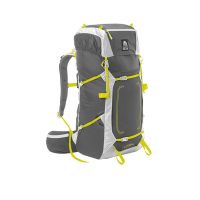
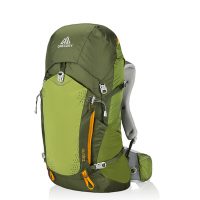
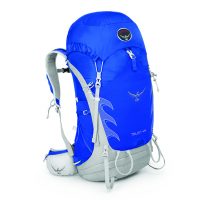
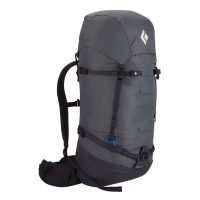
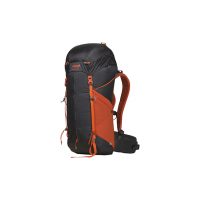

 91
91 

